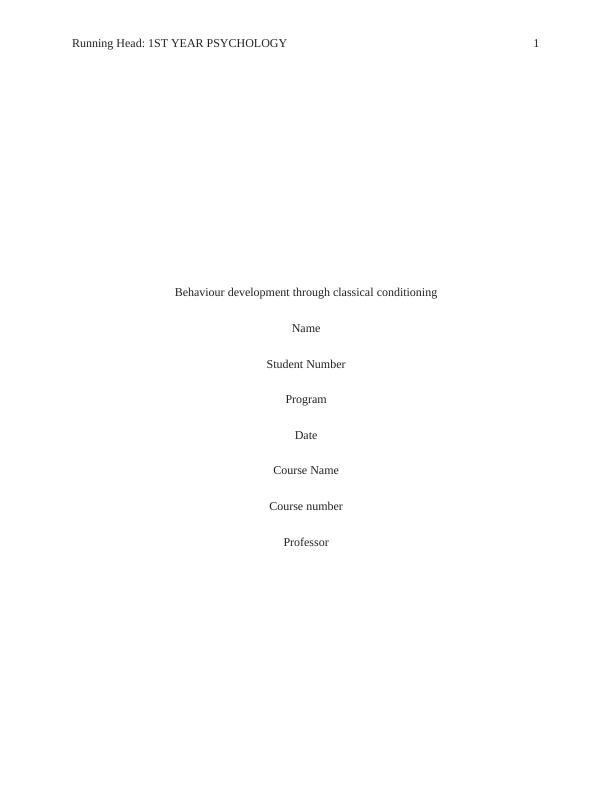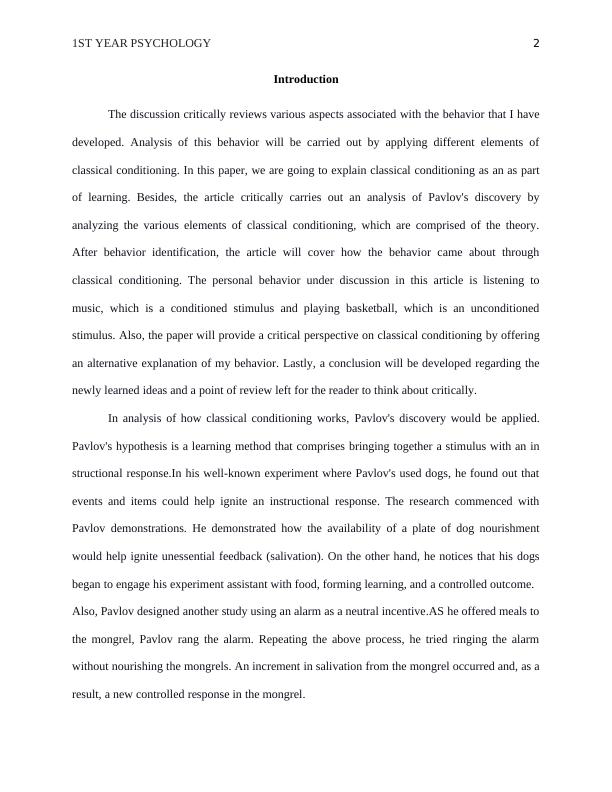Behaviour Development Through Classical Conditioning
Write an essay explaining classical conditioning and applying it to a personal behavior, while also providing an alternate explanation.
9 Pages1758 Words22 Views
Added on 2022-09-18
Behaviour Development Through Classical Conditioning
Write an essay explaining classical conditioning and applying it to a personal behavior, while also providing an alternate explanation.
Added on 2022-09-18
ShareRelated Documents
End of preview
Want to access all the pages? Upload your documents or become a member.
Unconditional and Natural Response
|7
|1775
|186
Behavioral Perspective Assignment
|5
|657
|139
Introduction to Psychology Theory 2022
|10
|2712
|26
Introduction to Psychology: Learning, Classical Conditioning, Operant Conditioning, and Social Learning
|9
|1819
|188
Associative Learning in Psychology
|5
|1008
|84
Learning Concepts Classical Molding
|3
|1171
|32



